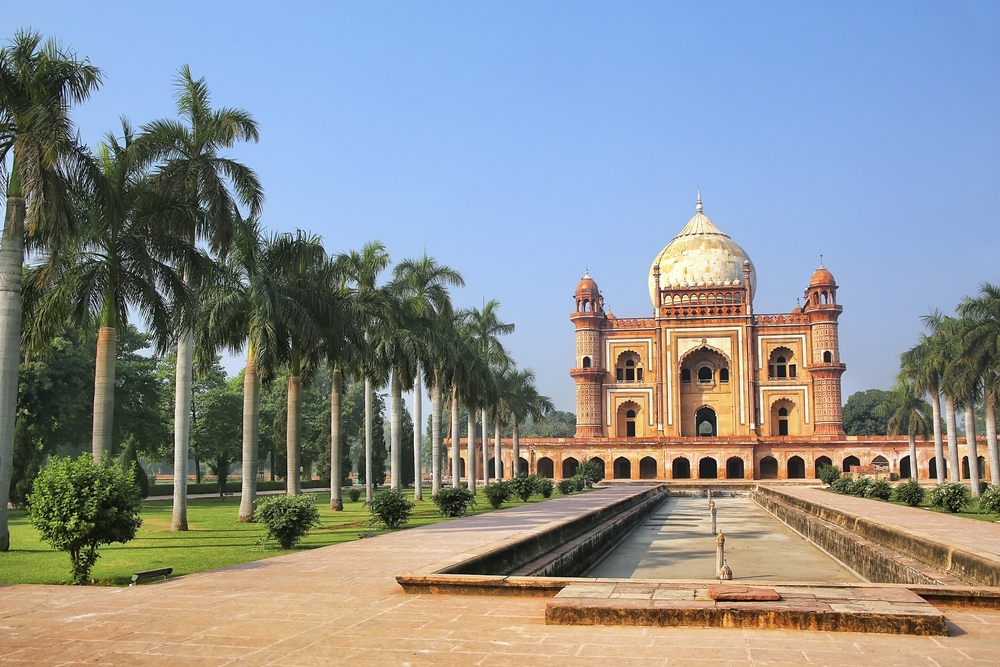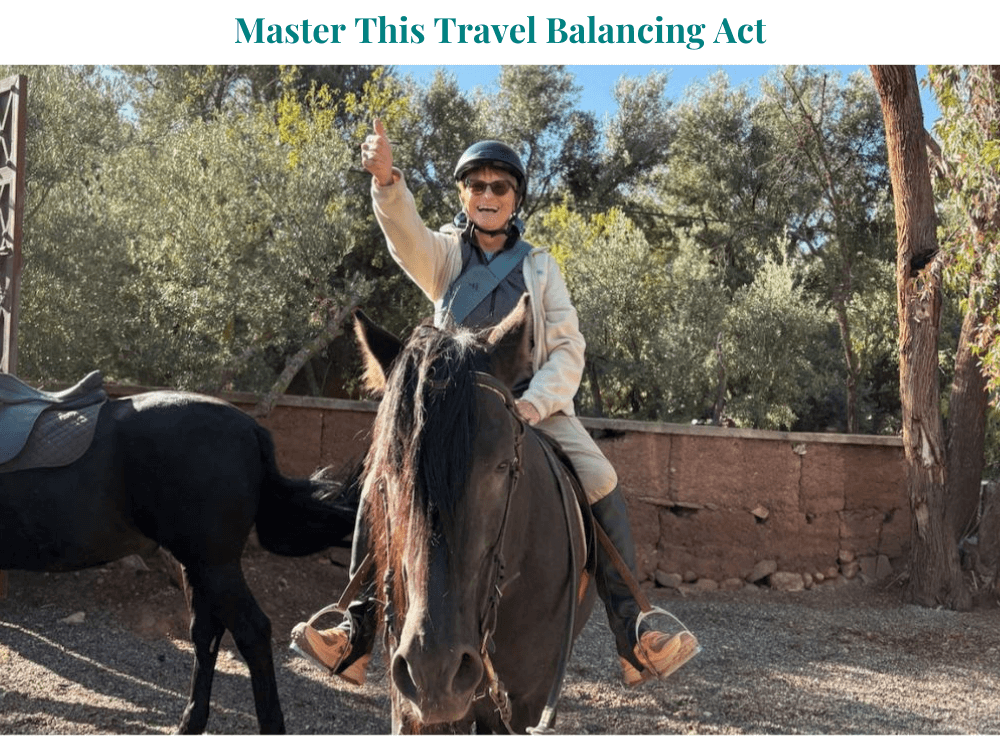Agra and the Taj Mahal: Insider’s Guide
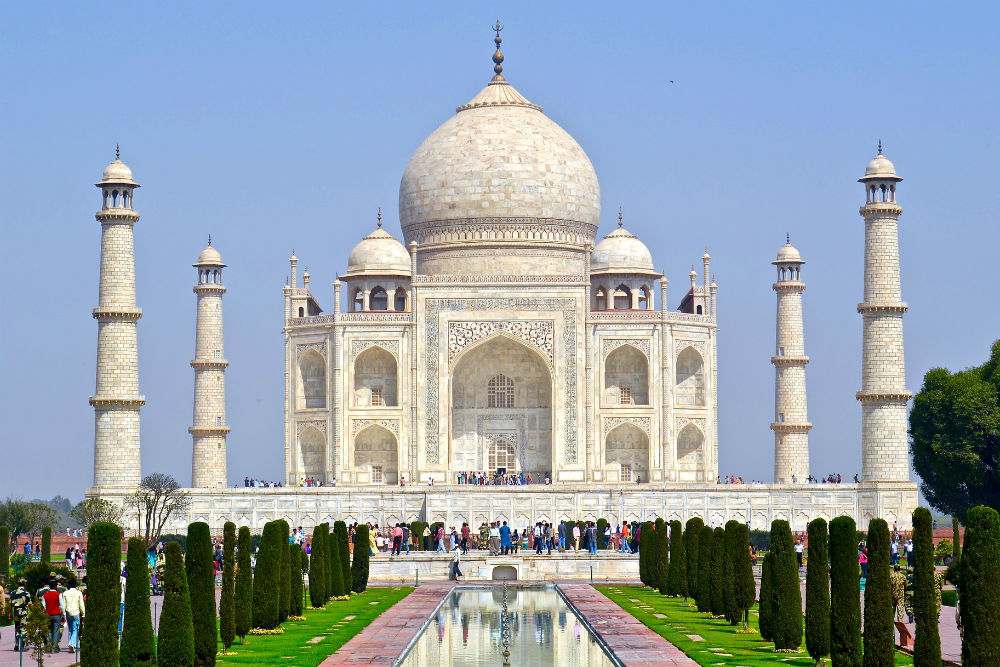 When will you get the fewest crowds and bluest skies at the Taj? Read on to find out. Photo: Pixabay
When will you get the fewest crowds and bluest skies at the Taj? Read on to find out. Photo: Pixabay
The insider advice on this page is from one of Wendy’s Trusted Travel Experts for India: Sanjay Saxena of Nomadic Expeditions.
The son of a brigadier general in the Indian Army, Sanjay was born in New Delhi and grew up living in numerous places throughout India. He began mountaineering and rock climbing in the high Himalayas at age 15, and since 1979 has led groups on trekking, climbing, touring, and safari trips not only in India but in Tibet, Mongolia, Sri Lanka, Nepal, and Bhutan. In 1992 he and David Breashears co-led the first western descent of the Brahmaputra River—a 250-mile whitewater rafting trip that was filmed for the BBC series “Classic Adventures”—and in 2001 he led the first Western group to journey overland from Kunming to Lhasa along the “southern road.” Committed to running trips that are ecologically responsible and culturally sensitive, Sanjay has been named an “Unsung Hero of Compassion” and recognized by the Dalai Lama for the community projects he has created in South Asia. Travelers benefit from his rare combination of deep insider knowledge and talent for creating unique, intellectually engaging itineraries to both traditional and remote destinations.
Where to Stay and Eat
Best bang-for-your-buck hotels
For those seeking a room with a view of the Taj Mahal, the upper-floor rooms at the Taj View Hotel deliver. With similar rates, the upper floors of the Taj Hotel and Convention Center and the Radisson also provide full or partial views of the Taj. If you stay at any of these properties, Sanjay can guarantee a room with a view.
Best-value splurge hotel
Oberoi Amarvilas. Not only is it hands-down the best-located hotel in the city (a 5-minute walk to the main entrance of the Taj), but it’s also the most luxurious. It also offers Taj Mahal views from every room. Sanjay recommends you opt for a room with a balcony—for enjoying morning tea or a sundowner with an iconic view from the comfort of your own room.
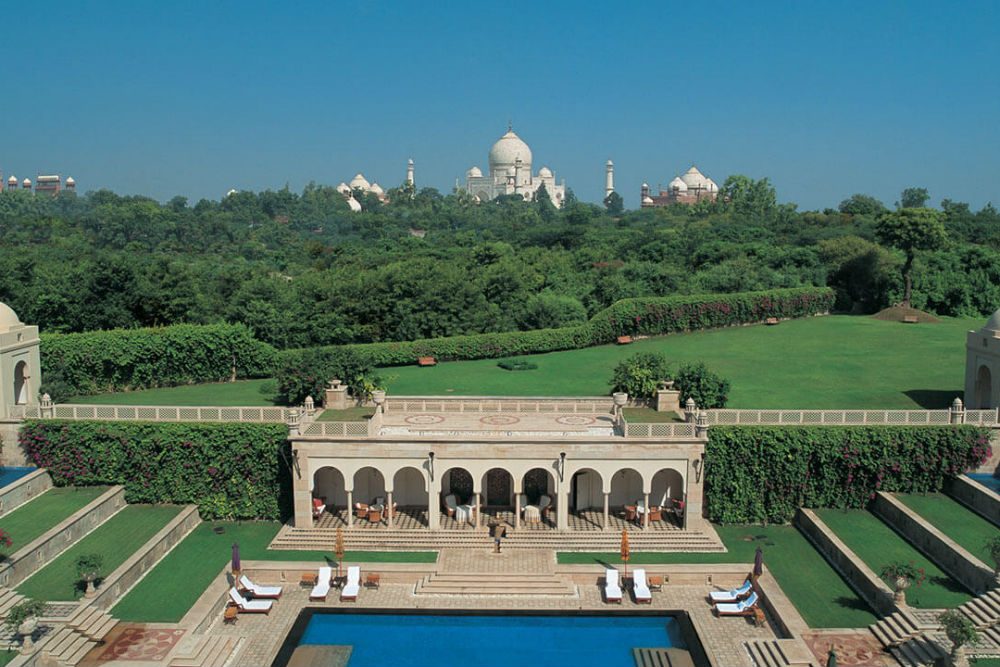
Every room at the Oberoi Amarvilas has a view of the Taj Mahal; some look down on the pool too.
Restaurants the locals love
Pinch of Spice, just across the road from the ITC Mughal Hotel, offers up a diverse menu featuring North Indian, Mughlai, and Chinese cuisines.
Dasaprakash is a cherished establishment (its parent company has been in business for over 100 years) that serves only vegetarian fare (and no alcohol). Specializing in South Indian cuisine, this restaurant offers a respite from the typical curries served elsewhere. Be sure to ask for a masala dosa or an uttapam (a sort of Indian pizza), both traditional South India favorites.
Molecule Air Bar is a trendy and popular rooftop dining spot known for its lively atmosphere and innovative menu. With its open-air bar concept and mix of Indian, Asian, and continental dishes, Molecule is perfect for casual dining and cocktails.
Relaxed and inviting, Salt Café is a popular spot to unwind and enjoy a mix of Indian and continental dishes. Good for dinner, salads, or just coffee and dessert.
Dishes to try
For the more adventurous, Agra offers cheela, which is made of chickpea flour cooked on a flat iron skillet like a crêpe, with tomatoes, onion, and local spices. Street vendors and small restaurants in Sadar Bazaar all make and serve this Indian crêpe; buy one and eat it as you wander the bazaar.
If you have a sweet tooth, try panchhi petha, another Agra specialty. It’s a translucent soft candy made from ash gourd, also known as winter melon.
Don’t miss dalmoth, an addictive snack made from fried lentils, mixed nuts, and spices. Some varieties include dried fruits and raisins. The combination of fried lentils and nuts give it crunch, while the spices offer a bit of a kick. It’s a kind of Indian trail mix—you’ll be hooked.
What to See and Do
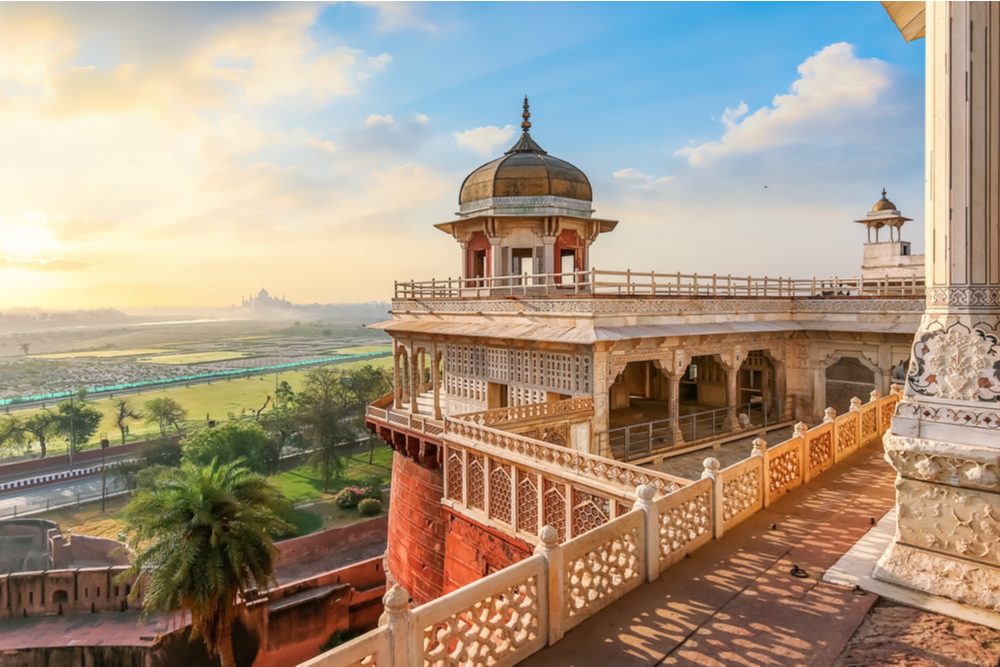
The Agra Fort, or Red Fort, is a UNESCO World Heritage Site. Photo: Shutterstock
Don’t miss
The Old City of Agra, best visited by foot. Its narrow alleyways are lined with small shops where locals come to buy their spices, textiles, ayurvedic medicine, kitchen wares, and prayer offerings. Some of the buildings in the Sadar and Kinari bazaars date back to the Mughal Empire (some over 400 years old), and there’s quite an important Shiva temple here too. Best of all, a walking tour of the Old City reveals a slice of everyday life in Agra, far from the maddening tourist crowds.
If you are traveling to India over a full moon, spend it in Agra. Limited tickets are available for full moon viewing of the Taj Mahal, so be sure to plan ahead! Nothing short of magical, the full moon serves to enhance the architectural splendor of the Taj. Note: Visitors do not have full access to the complex during night viewing; entry is limited to the entrance hallway, platform, and first garden.
Don’t bother
Hiring one of the so-called guides that stand outside the monuments flashing badges. While they may have some knowledge of the site, they are unlikely to have the required government certification and will not be allowed to enter the monument. In general, they’ll take you around the outside and then tell you you’re free to explore the interior on your own.
Hidden gems
I’timād-ud-Daulah and Metab Bagh. These sites are close to each other, across the river from the Taj, and infrequently visited, as it takes time and effort to go across the river. I’timād-ud-Daulah (the mausoleum of Shah Jahan’s father-in-law) predates the Taj Mahal and has a far greater concentration of marble inlay workmanship than the Taj. Metab Bagh is a garden across the river directly opposite the Taj Mahal. It’s reputed to be the site where the “black marble Taj Mahal” was going to be built for the king. Whether the story is true or not is unimportant; what matters is that the views of the Taj Mahal from here are glorious and unobstructed and you will share the site with just a handful of people.
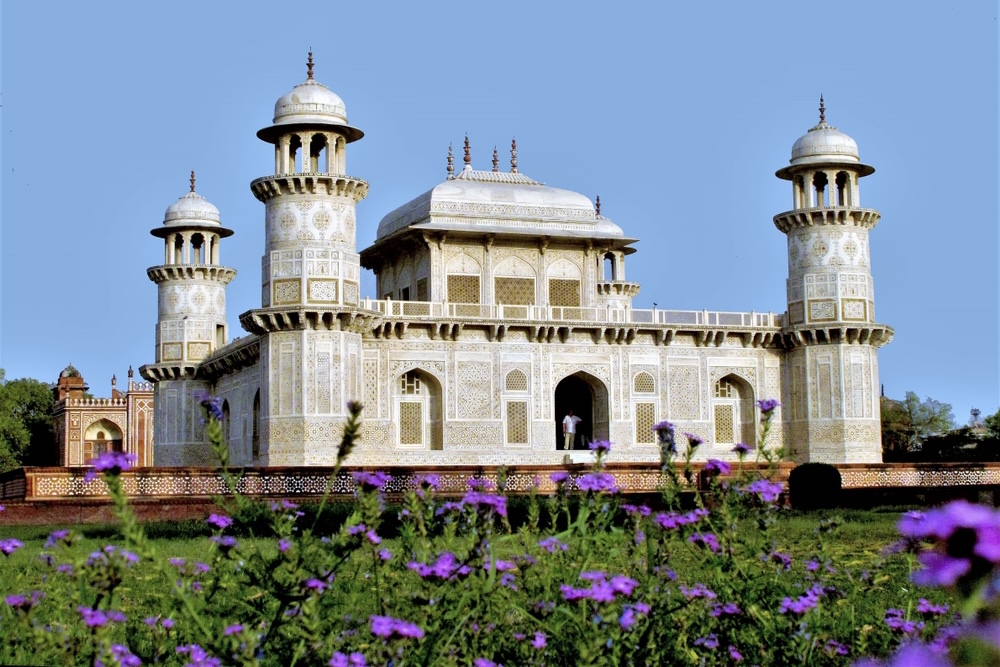
I’timad-ud-Daulah’s tomb is considered by some a first draft of the Taj Mahal. Photo: Shutterstock
Sikandra. Unlike other Mughal mausoleums, Akbar’s Tomb, located in Sikandra, was planned by the great Mughal emperor himself. Though construction began during Akbar’s lifetime, the mausoleum was completed by Akbar’s son, Jahangir. The tomb’s architecture is a blend of Hindu, Islamic, and Persian styles, reflecting Akbar’s inclusive ideology. The beautiful gardens, intricate carvings, and majestic gateway make for a fascinating visit.
Wildlife SOS Elephant Conservation and Care Center. Wildlife SOS is a nonprofit dedicated to the rescue and rehabilitation of elephants and other wildlife in India. Their Elephant Conservation and Care Center, located near Agra, focuses on providing a safe haven for elephants that have been rescued from abusive situations (mainly from the tourism and entertainment industries). Visitors can take guided tours of the Center, where knowledgeable staff share stories of the rescued elephants and the organization’s conservation efforts. The Center offers educational programs aimed at raising awareness about wildlife conservation, the importance of biodiversity, and ethical wildlife tourism practices. They also offer (longer-term) volunteering programs.
Cheap thrill
Pose at the viewing platform at the main entrance to have a photo that looks like you’re holding the Taj Mahal in your hands.
Bragging rights
Tripods and large-format cameras are strictly forbidden in the Taj complex—but Sanjay can obtain special permission for photographers to bring in a tripod for their 35mm or large-format field camera. The permits are valid for the Taj, Metab Bagh, and Itmad ud Daula. Under no circumstances are you allowed to take your camera with you inside the mausoleum.
Best Time to Go
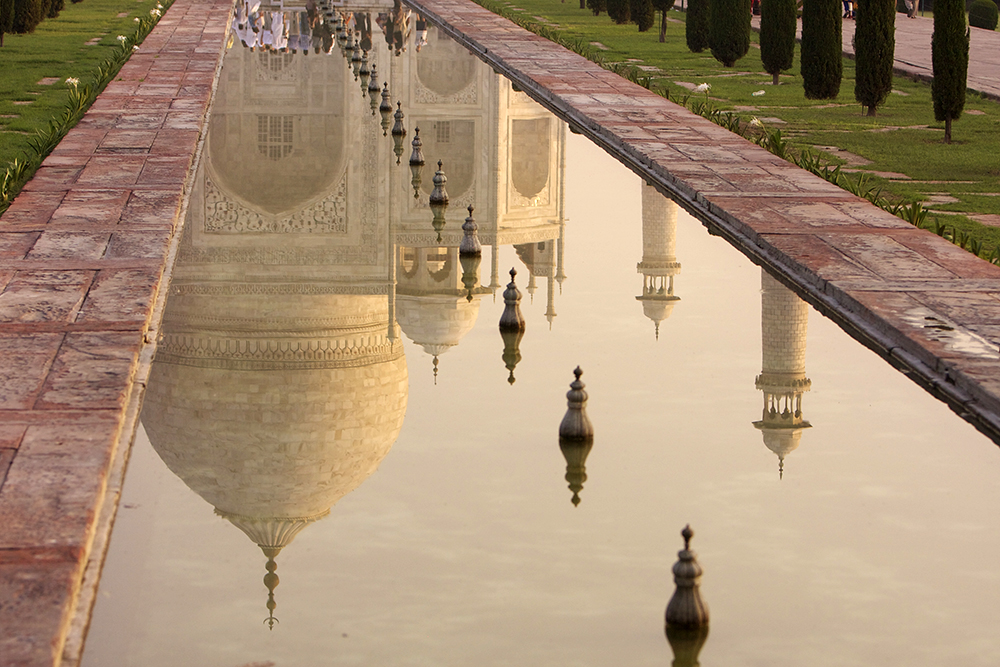
July through October and February through March, when you’ll find the fewest people in Agra and the best photographic conditions.
Worst Times to Go
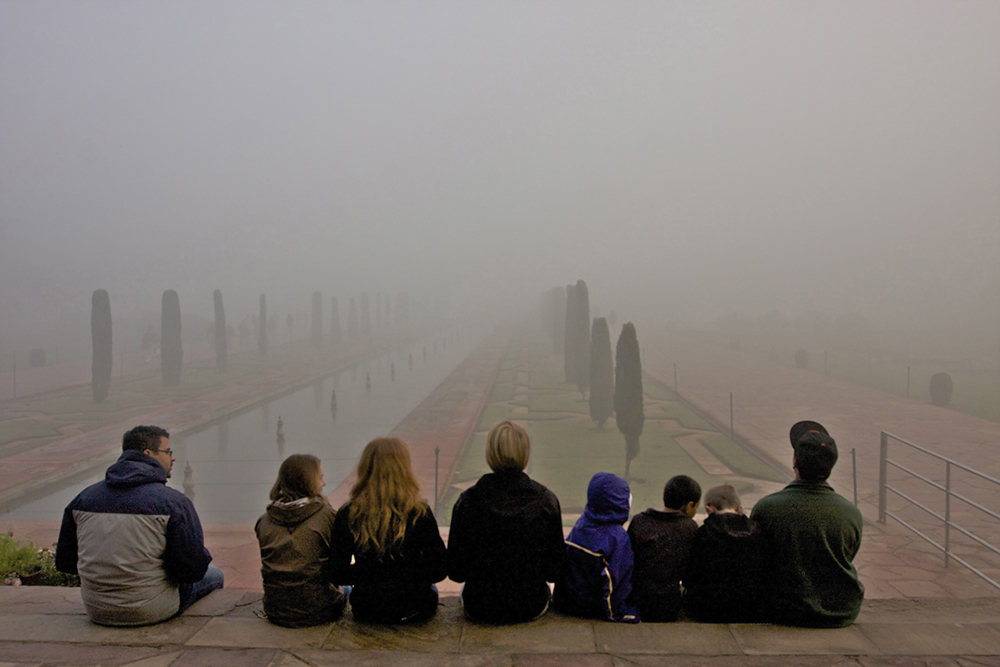
December and January have poor visibility. Heavy smoke from wood and coal fires during these months create a smog that settles in during the night and can obscure views of the Taj during the early morning hours. On cold winter mornings, views of the Taj from its entry gate may not be possible until the sun burns off the fog, around 9:00 or 10:00 a.m. Though the situation is improving as the nearby villages are being supplied with cooking gas, for the sunrise view you are better off visiting during the warmer months.
In terms of crowds at the Taj Mahal, weekends and Indian national holidays are the worst, with some 52,000 visitors a day—more than four times as many as on weekdays.
Though about 75 percent of visitors arrive in the afternoon, it’s the only time you’ll see the glow of the sunset on the Taj. Tip: Arrive no later than 3 p.m. or the lines to get in become incredibly long.
Biggest Rookie Mistakes
Bringing your daypack with camera accessories (even pocket tripods and battery chargers), your journal or other writing materials, or books into the Taj Mahal. None of these are permitted and you will have to leave them outside in a locker. The lockers are perfectly secure but it’s time-consuming: You may miss the sunrise if you’re busy checking in your belongings.
Sleeping in. There are 100 Indian tourists for every foreign tourist who comes to the Taj Mahal, but at sunrise the Indians are either headed to the temples or fast asleep, so the inner chambers are least crowded and easiest to explore in the early morning on weekdays. The gates open 15 minutes before sunrise.
Visiting Agra on a day trip from Delhi. Agra is 100 miles from Delhi and the drive generally takes about four hours. Even if you leave Delhi quite early in the morning, you won’t arrive in Agra until midday, when the white marble of the Taj washes out in the bright sunlight. The Taj is best visited at sunrise or from late afternoon into sunset. Moreover, as Agra was the seat of the Mughal Empire for over 200 years, there is a lot to see aside from the Taj, including three other UNESCO World Heritage Monuments. Devoting two full days to Agra is best; even if you are pressed for time, an overnight in Agra is a must to see the Taj at sunrise.
The Souvenir
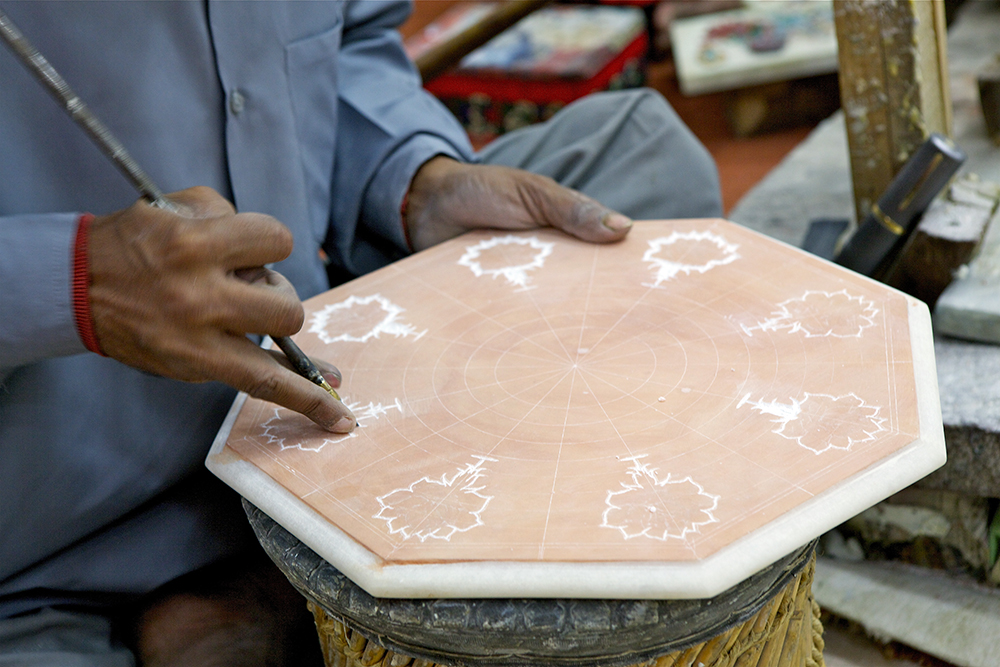
Artisans who are descendants of the craftspeople who built the Taj still carry on the tradition of inlaying precious and semiprecious stones in marble. Watching them work is a treat, and you can buy items large (dining table tops) and small (a box, coaster, etc.). Just be sure you know what you’re buying: Some artisans also work in soapstone and are happy to let you assume that it’s marble. You’ll be safe with anything you find in the showrooms at Akbar International or Kalakriti, two stores known for their high-quality, exquisitely crafted marble pieces.
Instagram Moment
Sunset at Metab Bagh: Get the full spectacle of the Taj Mahal minus the crowds.
Don’t Forget To Pack
Shoes are strictly prohibited at the main building of the Taj Mahal, so bring extra socks in case you need to check your shoes: The marble can become quite hot as the day progresses. Better yet, be sure to ask for the free shoe covers that are included in the price of entry at the ticket counter. If you don’t ask, they probably won’t give them to you.


